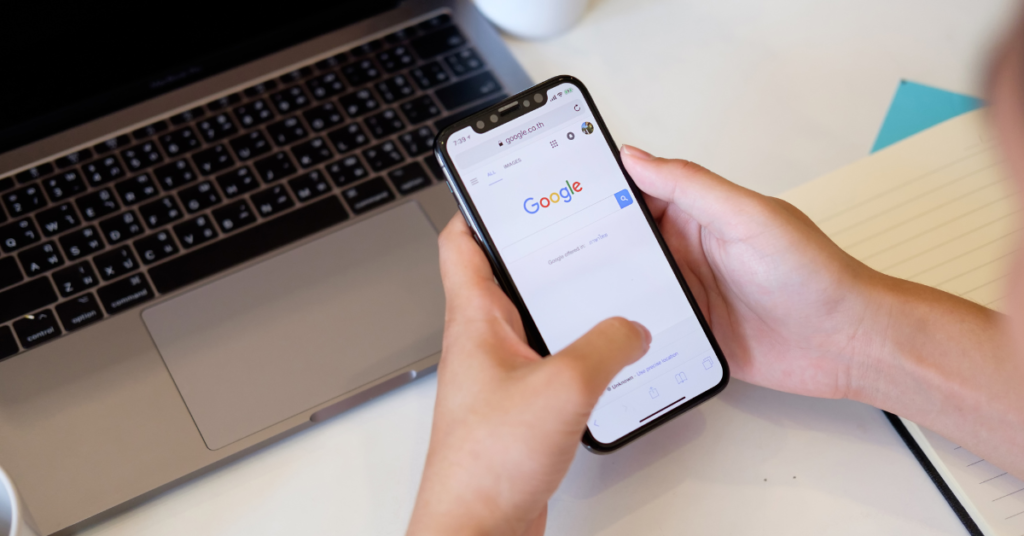Guide - Google Ads Experiments

Nick Czerwinski
PPC & Local SEO Specialist
In the ever-evolving world of online advertising, staying ahead of the competition and maximizing your Google Ads ROI is paramount. Google Ad experiments, like Dr. Frankenstein’s creation, offer a systematic way to fine-tune your advertising campaigns, discover what works best for your Google Ads audience, and boost the effectiveness of your ad spend. Just as Dr. Frankenstein sought to breathe life into his creature, you can breathe new life into your advertising efforts through experimentation.
Why Experimentation Matters: Enhancing Your Campaigns with Google Ads Experiments
Before we delve into the nuts and bolts of Google Ad experiments, it’s essential to grasp the significance of experimentation in the context of online advertising:
Optimization: Advertising is all about optimizing your campaigns to achieve the best possible results. Without experimentation, you may miss out on opportunities to improve your ad performance.
Audience Insights: Experiments allow you to gather valuable insights about your audience’s preferences, behavior, and responsiveness to different ad elements.
Budget Efficiency: By fine-tuning your campaigns based on experimentation results, you can allocate your budget more effectively, reducing wasted ad spend and ensuring your resources are used wisely.
Adaptation: The digital advertising landscape is dynamic. What works today may not work tomorrow. Experiments enable you to adapt to changing trends and user behavior, ensuring your campaigns remain relevant.
Continuous Improvement: Successful advertising is an iterative process. Regular experimentation helps you refine your strategies and stay competitive in the ever-changing world of online advertising.
What You'll Learn About Google Ads Experiments
In the following sections, we’ll cover everything you need to know about Google Ad experiments, including:
- Understanding Google Ad experiments and their importance
- How to set up your experiment, from selecting the right Google Ads campaign types to specifying experiment details
- Creating your experiment campaign by duplicating and making changes to your original campaign
- Launching the experiment with the appropriate split ratio and timing
- Monitoring and collecting data to gather meaningful insights
- Analyzing the results to determine the winning campaign
- Implementing changes based on the experiment’s outcomes
- Common pitfalls to avoid and best practices for successful experiments
Exploring the Concept of Google Ads Experiments
Google Ad experiments, also known as A/B tests or split tests, are controlled experiments that allow advertisers to test changes in their Google Ads campaigns to determine their impact on performance. These changes can include adjustments to ad copy, Google Ads bidding strategies, keywords, and more.
In a typical Google Ad experiment, you create a duplicate of your original campaign (the “experiment campaign”) and make specific changes to it while keeping your original campaign unchanged. The system then randomly assigns users to either the original campaign or the experiment campaign, allowing you to compare their performance side by side.
The Importance of Google Ads Experiments for Campaign Optimizatio
Data-Driven Decision Making: Experiments provide a structured way to test hypotheses and make data-driven decisions. Instead of relying on guesswork, you can base your campaign changes on real performance data.
Optimization: Experiments enable you to optimize your campaigns by identifying which changes lead to better results. Whether it’s improving click-through rates (CTR), increasing conversions, or lowering costs, experiments help you fine-tune your strategies.
Risk Mitigation: By testing changes in a controlled environment, you can assess their impact without risking the performance of your main campaign. This risk mitigation is especially crucial for advertisers with high-stakes campaigns.
Continuous Improvement: In the ever-evolving world of online advertising, staying stagnant is not an option. Experiments empower you to adapt to changing trends and user behavior by testing and refining your strategies.
Budget Efficiency: Experimentation can lead to more efficient allocation of your advertising budget. You can identify which adjustments yield the best results and prioritize budget allocation accordingly.
Different Types of Google Ads Experiments
A/B Split Test: This is the most common type of experiment, where you create an experiment campaign that is identical to your original campaign except for the changes you want to test. Users are randomly assigned to either the original or experiment campaign.
Draft and Experiment: In this type, you create a draft of your campaign, make changes to it, and then run an experiment comparing the draft to the original campaign. It allows for more complex changes and testing scenarios.
Step-by-Step Guide: Setting Up Your Google Ads Experiment
Now that you understand the importance of Google Ad experiments, let’s dive into the practical steps of setting up your experiment. This section will walk you through the initial stages, from selecting the right campaign to specifying experiment details.
Selecting the Appropriate Campaign for Your Google Ads Experiment
Before you begin setting up your experiment, it’s crucial to select the campaign you want to experiment with. Here are a few considerations to help you make the right choice:
Campaign Goals: Identify the specific goals you want to achieve with your experiment. Whether it’s improving CTR, increasing conversions, or optimizing for particular Google Ads audiences, choose a campaign that aligns with your objectives.
Data Availability: Ensure that the campaign you select has a sufficient amount of data to generate meaningful insights. An experiment with limited data may not yield reliable results.
Budget: Consider the budget allocated to the campaign. Experiments may require a portion of your advertising budget, so ensure that you have enough resources set aside for testing
Defining Key Details for Your Google Ads Experiment
Once you’ve chosen the campaign and the experiment type, it’s time to specify the details of your experiment:
Experiment Name: Give your experiment a clear and descriptive name. This will help you easily identify it among your campaigns.
Split Ratio: Decide on the percentage of traffic you want to allocate to the experiment campaign. For example, you can assign 50% of the traffic to the experiment and 50% to the original campaign. Adjust this ratio based on your goals and risk tolerance.
Start and End Dates: Set the start and end dates for your experiment. It’s essential to allow the experiment to run for a sufficient duration to collect meaningful data. Typically, experiments run for at least a few weeks to a few months, depending on your campaign’s traffic volume.
Experiment Settings: Configure additional settings specific to your experiment type. For example, in a Draft and Experiment test, you’ll need to select the draft campaign you want to test against the original.
Honestly, I consider him part of my Team as well, he really cares about our success. As we grow, he will grow with us. I’m excited about the journey and future with Mike and his Team at Metalogic! If you’re looking at Internet Marketing for your business, simply put he’s the best!

Chris Chustz
Owner, Family First Mortgage
Creating a New Campaign for Your Google Ads Experiment
With your experiment details set, it’s time to roll up your sleeves and create your experiment campaign. This section will walk you through the steps of duplicating your original campaign and making the necessary changes to create your experiment.
Duplicating Your Original Campaign for the Experiment
To begin, you’ll need to create a duplicate of your original campaign. Follow these steps:
Sign in to your Google Ads account: Log in to your Google Ads account using your credentials.
Navigate to the Campaigns Tab: Once you’re logged in, go to the “Campaigns” tab in your Google Ads dashboard.
Select Your Original Campaign: Locate the campaign you’ve chosen for your experiment. Click on it to select it.
Duplicate the Campaign: After selecting the campaign, click on the “More” button (represented by three vertical dots) located at the top of the campaign list. From the dropdown menu, select “Duplicate.”
Name Your Duplicate Campaign: Give your duplicate campaign a distinct name to differentiate it from the original. You can include “Experiment” in the name to make it easily identifiable.
Review and Confirm: Review the campaign settings to ensure they are accurate for your experiment. Once you’re satisfied, click “Save” or “Apply.”
Implementing Changes in Your Google Ads Experiment Campaign
With the duplicate campaign created, you can now make the necessary changes to test your hypotheses or optimizations. Here are some common changes you might consider:
Ad Copy: Experiment with different ad headlines, descriptions, and calls to action to see which version resonates best with your audience.
Bidding Strategy: Adjust your Google Ads bidding strategies, such as switching from manual bidding to automated bidding, or changing bid adjustments for specific audiences or demographics.
Keywords: Modify your keyword selection, adding new keywords or excluding irrelevant ones. You can also adjust keyword match type and keyword intent.
Ad Extensions: Experiment with different ad extensions, such as site link extensions or callout extensions, to see if they improve click-through rates.
Targeting: Refine your audience targeting settings, such as location targeting or device targeting, to reach a more relevant audience.
Ad Scheduling: Adjust your Google Ads ad schedule to adjust the times and days your ads are displayed to align with when your audience is most active.
Best Practices for Conducting Successful Google Ads Experiments
While making changes to your experiment campaign, keep the following best practices in mind:
Focus on One Change at a Time: To isolate the impact of specific changes, it’s best to test one variable at a time. This allows you to accurately measure the impact of each change.
Maintain Consistency: Keep other campaign settings consistent between the original and experiment campaigns. For example, if you change the ad copy, ensure that the targeting and bidding settings remain the same.
Monitor Changes: Periodically check the performance of your experiment campaign while it’s running. This will help you identify any unexpected issues or opportunities for further optimization.
With your experiment campaign created and the changes in place, you’re one step closer to conducting a meaningful Google Ad experiment. In the next section, we’ll guide you through launching your experiment with the appropriate split ratio and timing.
Optimizing the Split Ratio
One of the critical decisions in launching your experiment is determining the split ratio, which defines how you distribute traffic between the original campaign and the experiment campaign. The split ratio is usually expressed as a percentage and can be adjusted based on your objectives and risk tolerance.
Here’s how to set the split ratio:
Access Your Experiment Campaign: Log in to your Google Ads account and navigate to the “Campaigns” tab.
Select Your Experiment Campaign: Click on the experiment campaign you’ve created to select it.
Edit Settings: Once the campaign is selected, click on the “Settings” tab within the campaign.
Adjust the Experiment Split: In the settings, find the “Experiment split” or “Experiment split: original vs. experiment” option. Adjust the percentage to specify how much traffic you want to allocate to the experiment campaign. For example, if you set it to 50%, half of your traffic will go to the experiment, and the other half to the original.
Save Your Changes: After setting the split ratio, make sure to save your changes.
Launching Your Google Ads Experiment
With the split ratio defined, it’s time to launch your Google Ad experiment. Here’s how to do it:
Confirm Campaign Settings: Before launching, double-check that all campaign settings are correct for both the original and experiment campaigns. Ensure that the budget, targeting, ad scheduling, and other parameters align with your goals.
Review Experiment Details: Verify that you’ve correctly set the start and end dates for your experiment, as well as other experiment-specific details.
Save Your Campaign: Make sure to save any changes you’ve made within the campaign settings.
Click “Start Experiment”: In the campaign settings, you’ll find an option like “Start experiment” or “Launch experiment.” Click on this option to initiate the experiment.
Monitor and Analyze: Once the experiment is launched, monitor its progress closely. You’ll start collecting data on how the original and experimental campaigns perform.
Monitoring and Analyzing Performance in Your Google Ads Experiment
Monitoring the performance of your experiment is essential to understanding how your changes are impacting your campaigns. Here’s how to track and analyze performance:
Google Ads Dashboard: Log in to your Google Ads account and access the dashboard. Navigate to the “Campaigns” tab to view campaign performance.
Segmentation: To compare the original and experiment campaigns side by side, segment your data. You can do this by clicking on the “Segments” button and selecting “Experiment.”
Key Metrics: Identify key performance metrics you want to monitor, such as click-through rate (CTR), conversion rate, cost per click (CPC), and return on investment (ROI).
Data Period: Review data over the course of the experiment to identify trends and patterns. Early performance may differ from later stages, so look for changes over time.
Custom Marketing Plans Starting at $500 / month
Analyzing and Interpreting Results
As your Google Ad experiment progresses and data accumulates, it’s time to roll up your sleeves and analyze the results. This section will guide you through the process of interpreting the data to determine the winning campaign and gather insights for future optimization.
Assessing Key Metrics
Start by assessing the key performance metrics you’ve been monitoring throughout the experiment. Here are some important metrics to consider:
Click-Through Rate (CTR): Evaluate the CTR for both the original and experiment campaigns. A higher CTR often indicates that the ad copy or creative changes are resonating better with your audience.
Conversion Rate: Look at the conversion rate for each campaign. If your goal is to drive conversions, a higher conversion rate in the experiment campaign may indicate success.
Cost Per Click (CPC): Analyze the CPC for both campaigns. Lower CPC in the experiment campaign can lead to cost savings.
Return on Investment (ROI): If ROI is your primary goal, calculate the return on investment for each campaign to determine which one is more cost-effective.
Understanding Statistical Significance in Google Ads Experiments
To make informed decisions about the winning campaign, you need to assess the statistical significance of the differences in performance.
Use Statistical Tools: Google Ads provides statistical significance indicators to help you determine whether the differences in key metrics are statistically significant. These indicators take into account factors like sample size and variance.
Confidence Intervals: Review the confidence intervals for the key metrics. A narrow confidence interval indicates greater confidence in the results.
p-Values: Pay attention to p-values, which indicate the probability of observing the observed differences if there is no real effect. Lower p-values suggest greater statistical significance.
Declaring a Winning Variant
Based on the data analysis and statistical significance, you can declare a winner between the original and experiment campaigns:
Winner Declaration: If one campaign consistently outperforms the other with statistical significance across multiple key metrics, you can declare it the winner.
Consider Your Goals: Keep your campaign objectives in mind when declaring a winner. The winning campaign should align with your goals, whether it’s higher CTR, conversion rate, lower CPC, or improved Google Ads ROI.
Conclusion
Google Ads experiments are a powerful tool in the arsenal of digital advertisers. They offer a structured and data-driven approach to optimizing your advertising campaigns. By following the steps outlined in this guide and adhering to best practices, you can harness the potential of experiments to drive better results and achieve your advertising goals.
In this journey of experimentation, remember these key takeaways:
Data-Driven Decision Making: Base your campaign changes on data and insights gathered from experiments rather than relying on assumptions or guesswork.
Patience Is a Virtue: Allow your experiments to run for an adequate duration to collect meaningful data. Rushing the process can lead to inaccurate conclusions.
Statistical Significance Matters: Always consider the statistical significance of your results to ensure they are reliable and actionable.
Continuous Improvement: Embrace a culture of continuous improvement. Use the insights gained from experiments to inform ongoing optimizations and stay adaptable in the dynamic world of digital advertising.
Documentation and Sharing: Document your experiments, findings, and changes made. This documentation serves as a valuable resource for future campaigns and facilitates knowledge sharing within your team or organization.
Avoid Common Pitfalls: Be aware of common pitfalls, such as neglecting seasonality, overcomplicating experiments, or rushing the process, and take steps to avoid them.
Remember that advertising is not static. Audience preferences, market dynamics, and technology evolve over time. To stay competitive and achieve long-term success, you must be willing to adapt, test, and refine your strategies continually.
As you continue your journey in the world of Google Ads, may your experiments lead to greater advertising success, improved campaign performance, and a deeper understanding of your target audience. Happy experimenting!
Become A Google Ads Specialist With MetaLOGIC's Local Digital Marketing Academy
Get your business in front of the right people with Google Ads. From display and search campaigns to Shopping and video campaigns, there’s a way to reach your target audience on the Google Ads platform. Don’t wait to see results – Learn more about our Google Ads Online Training Course








